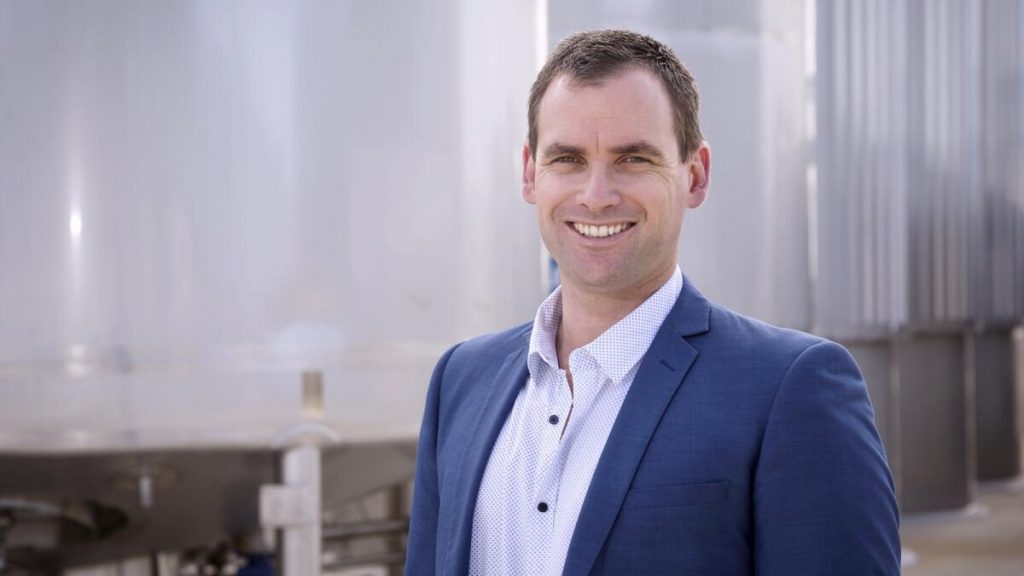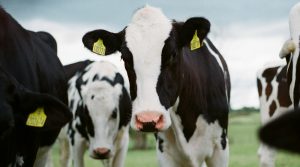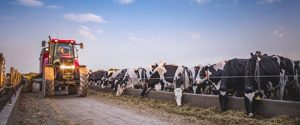
A milk processor CEO has voiced his fears for the dairy industry’s future in the face of fresh water buybacks.
Australian Consolidated Milk chief executive officer Jason Limbrick spoke about the potential impacts on the industry from a processing point of view at a recent water summit in Bendigo.
The summit was organised by the Goulburn Murray Irrigation District Water Leadership Group and was attended by farmers, food processors, community leaders, MPs and local government leaders.
ACM manages 400 million litres of milk to producing conventional, organic and A2 dairy ingredients and foods.
Milk is collected from about 300 dairy farmers, creating 110 direct jobs.
Mr Limbrick said ACM was just one part of the wider dairying story in northern Victoria.
“The dairy industry underpins food security and is the backbone and lifeblood of so many rural communities, producing around 20 per cent of Australia’s milk production or more than 1.4 billion litres,” he said.
“Northern Victoria makes up more than 85 per cent of milk produced in the basin and our region plays a critical role in supplementing northern states with fresh milk — around 250 to 300 million litres are trucked north.”
Across northern Victoria, dairy farmers employ close to 3000 people on-farm and 3500 in dairy processing across 11 factories, plus a further 6200 people work in related dairy industry activities.
“That’s almost 13,000 jobs our industry creates in northern Victoria alone,” Mr Limbrick said.
He said since the introduction of the Murray-Darling Basin Plan in 2012, dairy farm numbers across the basin had fallen by 47 per cent and raw milk production had dropped 35 per cent.
“Australian dairy processors are a critical part of the dairy supply chain.
“Our viability and sustainability are essential to securing a strong, vibrant dairy industry that can keep dairy manufacturing local.”
ACM products, like all Australian dairy products, are exposed to global demand and supply fundamentals and pricing, so competing on both scale, product mix and value into the future is essential.
Twenty years ago, northern Victoria produced around 2.7 billion litres of raw milk, now it is down to about 1.4 billion.
“Reductions in water availability and a tightening of water price caused by the basin plan has contributed to this decline,” Mr Limbrick said.
“While we are currently seeing marginal increases in raw milk production volumes, processors must be confident this will continue before further developing their asset bases to support domestic and export markets.
“This confidence is even harder to achieve when we know one of Australia’s largest producing dairy areas — the Goulburn Murray Irrigation District — is facing an uncertain future with less water.
“And less water means less milk production, which means less processing and less jobs.”
Mr Limbrick said dairying was special when it came to job creation.
Australian dairy processors create more than 70,000 jobs, with about 20,000 of these a result of direct employment — of these, almost 60 per cent are in regional Australia and a quarter of these are in the highest job skill categories.
“Australian dairy processors provide life-long, valuable careers and play a significant role in the vibrancy of regional and rural communities including the local footy team, the local primary school, and everything else in between,” Mr Limbrick said.
“The contribution dairy processors make cannot be underestimated.”
He said it was extremely disappointing to see the omission of the dairy industry when DCCEEW commissioned an ABARES report to examine the impact of water buybacks on irrigated agriculture.
“Omitting the processing industry, means the report is a long way from the full picture of how buybacks will impact our industry and communities in the GMID.
“The dairy industry is now being forced to commission its own research to understand the impact to our industry as a whole.”
Mr Limbrick said the announcement of a $300 million compensation package, of which Victoria might get $100 million, was seriously insufficient — especially when there were significant gaps in the ABARES report.
“Over the past 18 months, 11 processors have announced a closure due to various reasons and we cannot have further reductions in assets in the GMID footprint.”
He said government and the dairy industry working together to secure a viable and sustainable industry and community was essential.
“My fear is unsound water reform will destabilise the industry at a time when supply chain efficiency, value creation and collaboration are required.”
You can now read the most important #news on #eDairyNews #Whatsapp channels!!!
🇺🇸 eDairy News INGLÊS: https://whatsapp.com/channel/0029VaKsjzGDTkJyIN6hcP1K
























